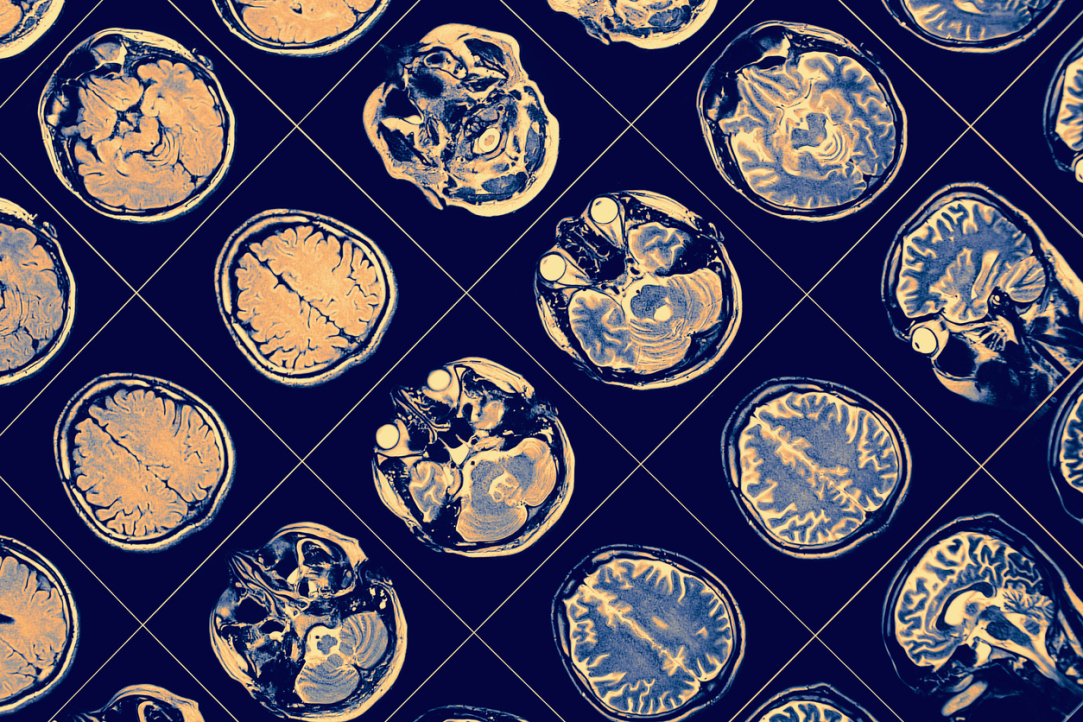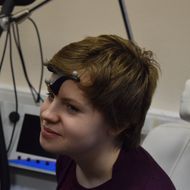Cortex Suppression Resolves Motivation Conflict in Favour of Prosociality

HSE University researchers have found that if cortical excitability is suppressed, the conflict between self-interest and prosocial motivations is resolved in favour of the latter—but only in cases when this conflict is really present.
The paper, titled ‘The Role of the Prefrontal Cortex in Prosocial and Self-Maximization Motivations: An rTMS study,’ was published in Scientific Reports.
Many theories of economic behaviour ignore the existence of prosocial motivation in humans. It is believed that people pursue exclusively selfish interests and are not interested in making decisions that are also beneficial to others. However, neuroscientific research proves that this is not the case.
For example, when interacting with a stranger, it is more profitable for an individual to allocate resources in whatever manner allows them to gain as much as possible. But people are more likely to share equally, even when there is no punishment for selfishness. That is how our desire for cooperation and justice works, which is probably inherent.
Researchers know that the right dorsolateral prefrontal cortex is involved in choosing between self-interest and prosocial motivation. But it is still not entirely clear what exact behaviour is triggered by the activation of this area. In some studies, suppression of the region’s activity led to prosocial behaviour, while in others it resulted in an active pursuit of selfish interests. In some cases, it produced no effect at all.
In order to specify the role of the dorsolateral prefrontal cortex in such situations, HSE University researchers carried out an experiment with the use of transcranial magnetic stimulation (TMS), which suppresses the excitability of the stimulated area of brain.
A total of 46 participants aged 18 to 27 were split into two groups. The first group received dorsolateral prefrontal cortex stimulation for 5–7 minutes, while the second group received stimulation of the brain areas responsible for visual perception. The participants then played two economic games in a row—a ‘dictator’ game and a ‘generosity’ game.
In the dictator game, a participant playing the dictator shares a certain amount of resources between themselves and a partner. The partner is only capable of accepting the dictator’s offer. In the generosity game, one participant also decides on how much to give to their partner. However, the amount of resources they get themselves is fixed and does not depend on the other player’s share.
The researchers found that suppressing the excitability of the dorsolateral prefrontal cortex made participants of the ‘dictator game’ give more to their partner compared to those whose visual cortex was stimulated. No such effect was observed in the ‘generosity game’: participants shared in about the same manner regardless of the type of stimulation.

Oksana Zinchenko, Research Fellow at the International Laboratory of Social Neurobiology and co-author of the paper
‘These results may prove that the dorsolateral prefrontal cortex is involved only if the participant experiences a conflict between self-interest and prosocial motivation, while its suppression leads to the resolution of this conflict in favour of other people’s interests. That’s why the stimulation of this area only impacts behaviour when the game motivates this conflict. In the generosity game, there was no conflict between self-interest and prosocial motivation, since the participant’s personal profit did not depend on their generosity towards their partner. In the dictator game, this conflict is more apparent.’
Oksana Zinchenko
Research Fellow, International Laboratory of Social Neurobiology
See also:
Cognitive Reappraisal of Negative Emotions Can Help Manage Stress
Researchers at the HSE International Laboratory of Social Neurobiology assessed the effectiveness of two strategies for regulating emotions: reappraisal and suppression. Having analysed data on the electrical activity of 60 individuals’ brains, the scientists discovered that both approaches put additional strain on the nervous system. It was also found that individuals who are prone to emotional contagion tend to be more effective in using reappraisal and managing negative emotions. The paper has been published in Experimental Brain Research.
Russian Researchers Unveil Mechanism Underlying Language Processing Disruptions in Epilepsy Patients
Researchers at HSE University and the Pirogov National Medical and Surgical Centre have examined alterations induced by epilepsy in the language-related neural network within the brain. Using graph-based analysis, the researchers studied fMRI data from 28 patients and found that in epilepsy, both hemispheres of the brain become activated during language processing and short connections form between the hemispheres, while long connections within one hemisphere are disrupted. The study has been published in Epilepsy&Behavior.
HSE Creates ‘Transfer of Neurocognitive Technologies’ Consortium
HSE, the Pirogov National Medical and Surgical Centre, and the Centre for Speech Pathology and Neurorehabilitation of the Moscow Healthcare Department have signed an agreement on cooperation and the creation of a ‘neuro-consortium’ under the name ‘Transfer of Neurocognitive Technologies’. The new body will boost the development and implementation of advanced solutions in neurotechnology aimed at maintaining and improving people's health. The agreement was signed for five years, and the consortium is open to new participants.
'While it May Sound Futuristic, It Holds Great Promise': Olga Dragoy Shares Her Thoughts on Language Function Restoration and the Future of Neurotechnology
In the spring of 2023, the fifth strategic project of the Priority 2030 programme, 'Human Brain Resilience: Neurocognitive Technologies for Adaptation, Learning, Development and Rehabilitation in a Changing Environment,' was launched at HSE University. The strategic project brings together researchers from all campuses of HSE University. In her interview with the HSE News Service, Olga Dragoy, head of the strategic project and Director of the HSE Centre for Language and Brain, shares an overview of the advanced technologies neuroscientists are creating today, the underlying inspiration driving these efforts, and the operational dynamics of interdisciplinary applied projects.
‘It Was Great to Look at Scientific Achievements through the Eyes of a Journalist, not a Scientist’
HSE University in Nizhny recently hosted the 2nd Autumn Neuro-linguistic School ‘NeuroSciCom: Popularising Language and Brain Studies’ for scientists and students at the HSE Centre for Language and Brain Studies in Nizhny Novgorod. The school was held as part of the 'Human Brain Resilience: Neurocognitive Technologies for Adaptation, Learning, Development and Rehabilitation in a Changing Environment' Strategic Project of the Priority 2030 programme.
The Brain Is a Network of Networks. Scientists Have Found a Way to Unravel Them
A team of researchers from HSE University and the Artificial Intelligence Research Institute (AIRI) have demonstrated the effectiveness of the PSIICOS method they had previously developed for non-invasive mapping the neural networks in the brain based on its electrical activity. Unlike other methods, it does not search for individual neuronal sources to be then combined into networks but instead looks directly for the functional networks of interconnected neuronal populations—and does so swiftly and accurately. The study findings have been published in NeuroImage.
HSE Neuroscientists Use Neural Network to Enhance Neurofeedback Technology
Researchers from HSE University and the Artificial Intelligence Research Institute (AIRI) have successfully lowered the latency between a change in brain activity and the presentation of the corresponding neurofeedback signal by a factor of 50. The results were obtained by employing a neural network trained in low-latency filtering of brain activity signals from diverse individuals. This approach opens up new prospects for the treatment of attention deficit disorder and epilepsy. A paper with the study findings has been published in Journal of Neural Engineering.
Online Rhythmic Transcranial Magnetic Stimulation Can Reveal the Precise Moment When Preferences Shift in the Human Brain
Cognitive dissonance is a complex and multifaceted psychological phenomenon that arises in challenging decision-making scenarios. Multiple regions of the brain participate in its occurrence, yet the neurodynamics of underlying cognitive mechanisms remain a subject of debate. Researchers from the HSE Institute for Cognitive Neuroscience have proposed the use of online transcranial magnetic stimulation applied to participants as they were actively engaged in tasks, to pinpoint the moment of cognitive dissonance resolution. Their findings have been published in a review paper in Frontiers in Human Neuroscience.
HSE University Holds 10th Summer School ‘Eye-tracking in the Lab and Beyond’
This year, more than 100 students from Russia and abroad took part in the 10th summer neurolinguistic school, ‘Eye-tracking in the Lab and Beyond’. The school is held annually by the HSE Center for Language and Brain. Leading experts spoke about advanced developments and research in the field of video-oculography.
New Technologies for Preserving Brain Functions: ‘Not Magic, but Normal Engineering’
New methods of brain mapping will make it easier to identify the cortex areas responsible for speech functions and to perform operations on the brain, as well as reduce the likelihood of damage to important areas. In addition, this will allow for more frequent use of non-invasive methods for restoring speech and other functions lost due to injuries and illnesses.


